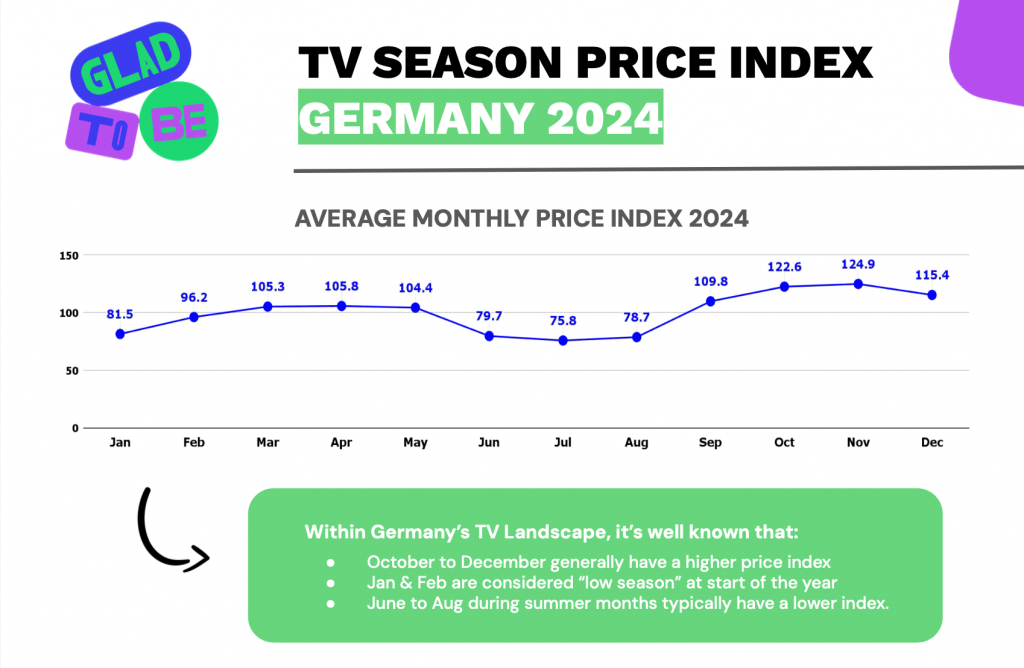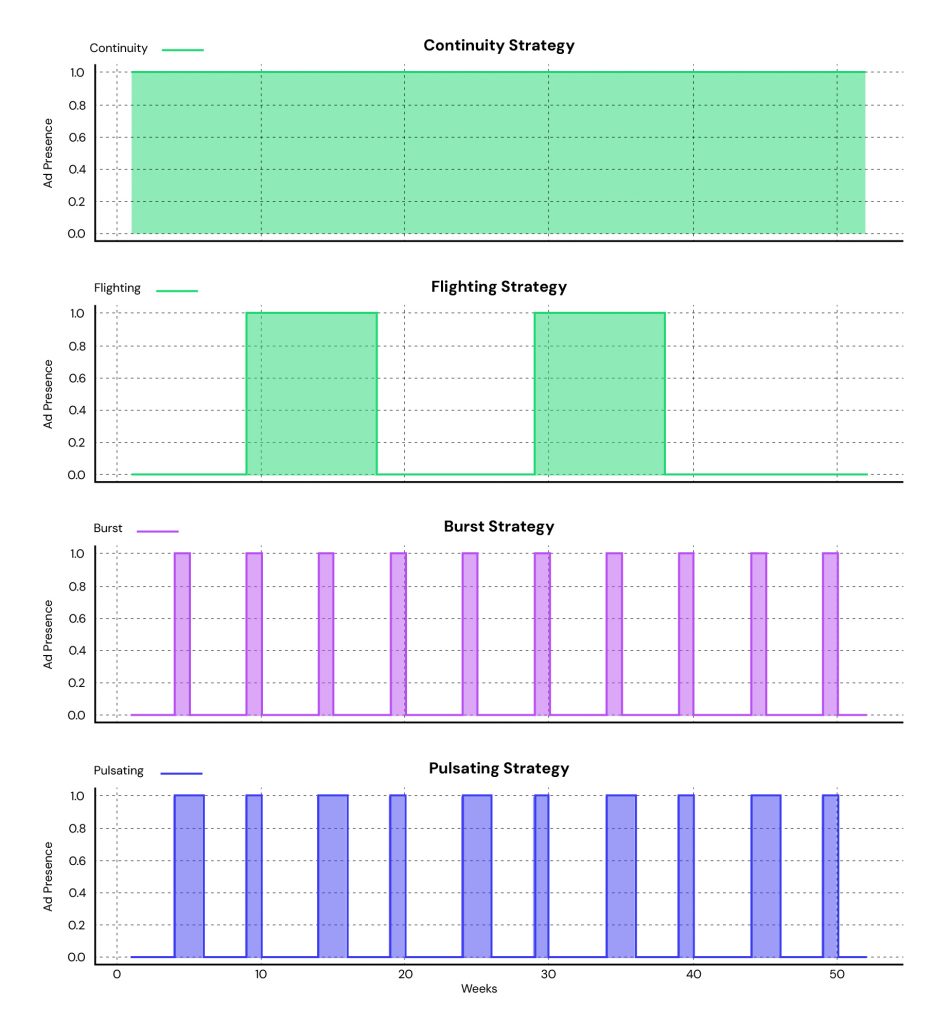Overview of Performance TV
Media Tactics
Performance focuses on generating immediate and measurable actions from viewers, such as making a purchase, visiting a website, or calling a phone number. Here are key media tactics relevant to performance TV campaigns, with a focus on optimizing, you guessed it: PERFORMANCE.
1. Continuity Strategy
Definition: Maintaining a consistent level of advertising over a long period to keep the product or service top-of-mind.
Advantages:
- Steady Engagement: Keeps the audience consistently engaged, which is crucial for products or services with steady demand.
- Brand Building: Helps in building and maintaining brand awareness over time.
Use Case: Best for products with stable demand, such as subscription services or daily-use products.
Example: A health supplement company running continuous ads to maintain steady sales.
2. Flighting Strategy
Definition: Alternating periods of intense advertising with periods of no advertising.
Advantages:
- Cost Efficiency: Maximizes budget by focusing on high-impact periods.
- Targeted Impact: Ideal for seasonal products or special promotions.
Use Case: Suitable for seasonal products or services that see spikes in demand at specific times.
Example: A tax preparation service advertising heavily during tax season.

The image shows the TV Season Price Index for Germany in 2024, highlighting the average monthly price index throughout the year. This index reflects the cost of TV advertising during different months, with significant variations indicating high and low demand periods.
A case for Taxes:
For tax preparation services in Germany, the TV Season Price Index indicates that initiating advertising campaigns in January and February provides cost-effective early engagement, while maintaining presence through March and April captures peak demand. Adjusting the campaign intensity based on the price index ensures cost-efficiency while achieving high visibility during the critical tax season.
3. Burst Strategy
Definition: Short, intense bursts of high-frequency advertising over a brief period.
Advantages:
- Immediate Awareness: Quickly generates high levels of awareness and interest.
- Event Promotion: Effective for promoting events or limited-time offers.
Use Case: Ideal for new product launches, flash sales, or urgent call-to-action campaigns.
Example: A new promo (incentivized or non-incentivized) event with a high-frequency ad campaign leading up to and during the launch week.
4. Pulsating Strategy
Definition: Intermittent bursts of advertising followed by periods of no advertising.
Advantages:
- Balanced Exposure: Maintains brand awareness without overwhelming the audience.
- Flexibility: Allows for strategic timing of ad bursts to coincide with key periods.
Use Case: Best for products that benefit from periodic reminders and have ongoing relevance.
Example: A retail chain running bursts of ads around major shopping holidays such as Cyber Month, Singles Day or running up to Christmas.
Conclusion
For DRTV (Performance TV) campaigns, the choice of media tactic depends on the specific goals, budget, and nature of the product or service.
However, the front-loading strategy stands out as our recommendation due to its ability to generate quick awareness and strong initial impact, making it particularly effective for new launches and time-sensitive promotions for e-commerce businesses.

Continuity Strategy: Ads are run consistently throughout the year without any breaks, ensuring continuous presence. We recommend a minimum budget of EUR 20,000 for effective continuity campaigns. With smaller budgets, we pivot to a data-driven approach – identifying your best-performing days based on online results and condensing the campaign period from our standard 4-week minimum to a focused 3-week intensive period.
Flighting Strategy: Ads are run in specific periods with breaks in between. For example, ads might run from weeks 10 to 18 and then again from weeks 30 to 38.
Burst Strategy: Ads are run in intense bursts at regular intervals, such as every 5 weeks. This strategy concentrates ad spend in short periods to maximize impact.
Pulsating Strategy: Ads have peaks at regular intervals with smaller bursts in between, combining elements of continuity and flighting. This strategy maintains a continuous presence with occasional increased ad activity.
Extra Tip:
Front-Loading Advantage: All strategies benefit from front-loading – capitalizing on the beginning-of-month period when consumers are more optimistic about purchases following monthly salary payments. This timing optimization can significantly boost campaign performance regardless of your chosen strategy.


Leveraging Seasonality with TV Price Intelligence:
The TV Season Price Index serves as your strategic guide for campaign timing. If your ecommerce business experiences specific seasonal peaks, use this pricing intelligence to determine the most cost-effective testing periods. High-demand months mean higher TV costs but potentially greater audience receptivity – the key here is aligning your industry’s peak season with optimal pricing windows.
For first-time Performance TV clients, understanding these price fluctuations helps maximize budget efficiency and campaign impact.
Ready to Launch Your First Performance TV / DRTV Campaign?
Navigating Performance TV strategy can feel complex, but you don’t have to figure it out alone. Our team specializes in helping ecommerce businesses launch their first successful DRTV campaigns – from budget optimization to strategic timing.
Whether you’re working with EUR 20,000 or need to maximize a smaller budget through tactical precision, we’d be glad to help you design a campaign that delivers measurable results.
Get in touch with our Performance TV team today – we’d be glad to make your first Performance TV campaign an exciting success story!!!












